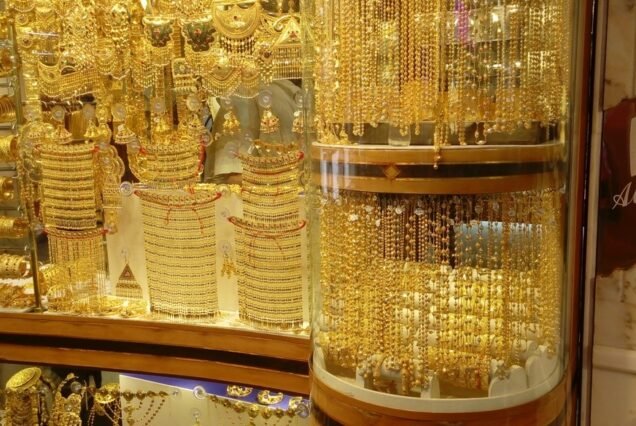5 days Dubai package
Included/Excluded
- 4 Nights hotel accommodation
- Daily buffet breakfast
- Round trip airport transfers
- Marina Dhow cruise with dinner
- Half day Dubai city tour with Gold & Spice souk
- Dubai Mall Shopping
- Burj Khalifa 124th floor visit
- Musical Fountain show
Tour Plan
Arrive at the airport and meet our representative who will escort you to your hotel in Dubai and help you check-in.
Morning at leisure
Evening: Pickup & Transfer to Dubai Marina
Private transfer from hotel/residence in Dubai at 07:00 pm.
Comfortable air-conditioned vehicle.
Scenic drive towards the luxurious Dubai Marina.
Arrival & Boarding at Dhow Cruise
Warm welcome with Arabic coffee and dates.
Red carpet entrance and onboard seating arrangements.
Enjoy the beautifully illuminated traditional wooden dhow.
Sailing Through Dubai Marina (Approx. 2 Hours)
Cruise Highlights:
Sail through Dubai Marina, Bluewaters Island, JBR, and Ain Dubai (world’s largest Ferris wheel).
Stunning views of skyscrapers, luxury yachts, and waterfront attractions.
Relax on the open-air upper deck or the air-conditioned lower deck.
Buffet Dinner Experience:
International & Arabic buffet with vegetarian & non-vegetarian options.
Soft drinks, water, tea, and coffee included.
Alcohol at own expense.
Entertainment & Activities:
Live Tanoura dance performance (traditional spinning dance).
Soft background music featuring Arabic, Bollywood, and English tunes.
Photo opportunities with stunning Marina skyline views.
Return to Marina & Disembarkation
Smooth docking back at the Marina.
Leisure time for quick photos before departure.
Return Transfer to Hotel/Residence
Pickup from the dhow cruise docking area.
Comfortable ride back to your hotel.
Morning: Old Dubai & Traditional Markets
9:30 AM – Hotel Pick-up & Drive to Old Dubai
Start your tour with a comfortable vehicle pick-up from your hotel.
Drive to Al Shindagha Heritage Village, one of Dubai’s oldest neighborhoods.
Al Shindagha Heritage Village & Perfume House
Walk through the beautifully restored Shindagha Heritage District, where Dubai’s history comes to life.
Visit the Shindagha Museum, showcasing Dubai’s pearl diving & trading history.
Explore the Perfume House, where you’ll learn about traditional Emirati scents and the art of Arabic perfumery.
Dubai Creek & Traditional Abra Ride
Arrive at Dubai Creek, the historic trading hub of the city.
Ride a traditional Abra (wooden boat) across the creek to Deira.
Explore Gold Souk & Spice Souk
Gold Souk:
Stroll through Dubai’s famous Gold Souk, home to some of the world’s largest gold collections.
See the Guinness World Record-holding largest gold ring.
Ideal place for shopping gold, diamonds, and jewelry.
Spice Souk:
Walk through the Spice Souk, filled with the aromas of saffron, cardamom, cinnamon, and more.
Purchase authentic Arabic spices, oud perfumes, and traditional souvenirs.
Try local dates and Arabic coffee (Gahwa).
Tip: Bargaining is common in souks, so don’t hesitate to negotiate!
Jumeirah Beach & Burj Al Arab
Jumeirah Mosque (Photo Stop)
Stop at the beautiful Jumeirah Mosque, one of Dubai’s most photographed mosques.
Optional: Join a guided cultural tour to learn about Emirati traditions.
Burj Al Arab (Photo Stop at Jumeirah Beach)
Head to Jumeirah Beach, where you can take stunning photos of the Burj Al Arab, the world’s only 7-star hotel.
Quick stroll along the pristine white sands of Jumeirah Beach.
Palm Jumeirah & Dubai Marina
Palm Jumeirah Drive & Atlantis, The Palm
Drive along Palm Jumeirah, the world’s largest man-made island.
Stop at Atlantis, The Palm for a photo session at The Pointe, a scenic waterfront with breathtaking views.
Optional: Visit Lost Chambers Aquarium or AquaVenture Waterpark.
Dubai Marina Exploration
Dubai Marina Walk & Bluewaters Island
Walk along the picturesque Dubai Marina, surrounded by modern skyscrapers and luxury yachts.
Explore Bluewaters Island – home to Ain Dubai (world’s largest observation wheel).
Afternoon: Transfer to Dubai Mall
Arrival at Dubai Mall, one of the world's largest shopping destinations.
Dubai Mall Shopping & Exploration (2-3 Hours Recommended)
Explore high-end fashion brands, electronics, and souvenirs.
Visit The Souk for traditional Arabian jewelry and perfumes.
Enjoy a quick coffee/snack break at one of the famous cafés (own expenses).
Burj Khalifa 124th Floor Visit – At the Top (1 Hour Recommended)
High-Speed Elevator Experience
Ride one of the world’s fastest elevators to Level 124.
Enjoy breathtaking panoramic views of Dubai’s skyline.
Photo Opportunities:
Sunset/evening view for a stunning golden cityscape.
Telescopes for a closer look at landmarks.
Dubai Fountain Show at Burj Lake (Evening - 30 Minutes)
Dubai Fountain Show (Every 30 Minutes fron 6 PM Onwards)
Watch the world’s largest choreographed fountain show.
Enjoy synchronized water, light, and music performances.
Best viewing spots: Burj Lake Boardwalk or waterfront promenade.
Optional Upgrade:
Fountain Show on an Abra Boat (for a closer experience).
Return Transfer to Hotel
Pickup from Dubai Mall.
Comfortable ride back to your hotel.
Check out from the hotel and your private transport will drive you to the airport for departure.
















CJC-1295 Wikipedia
Contents
CJC‑1295
Effects
Risks
Structure
See also
References
External links
—
CJC-1295
CJC‑1295 is a synthetic analogue of growth hormone‑releasing hormone (GHRH). Developed in the 1990s by the pharmaceutical company Catalent, it was designed to stimulate the pituitary gland to release endogenous growth hormone (GH) and consequently increase insulin‑like growth factor‑1 (IGF‑1) levels. The peptide is typically administered via subcutaneous injection and has a long half‑life, allowing for less frequent dosing compared with natural GHRH analogues.
The compound is often marketed under the name “Somatrogon” or “CJC‑1295 PEGylated”. PEGylation—attachment of polyethylene glycol chains—improves its stability in circulation and prolongs its activity. In research settings, CJC‑1295 has been used to study metabolic regulation, muscle hypertrophy, and anti‑aging processes.
—
Effects
Hormonal modulation
The primary action of CJC‑1295 is the stimulation of GH secretion from the pituitary. Elevated GH levels lead to increased IGF‑1 production in the liver and peripheral tissues. IGF‑1 promotes protein synthesis, cellular proliferation, and glucose uptake, thereby contributing to anabolic effects.
Body composition changes
In clinical trials involving older adults and patients with growth hormone deficiency, CJC‑1295 has been shown to increase lean body mass while reducing fat mass. Muscle fiber cross‑sectional area often enlarges, especially in type II fibers, improving strength and functional performance.
Metabolic benefits
GH and IGF‑1 influence lipid metabolism; studies report reductions in circulating triglycerides and LDL cholesterol. Additionally, enhanced insulin sensitivity has been observed, which may lower the risk of type 2 diabetes in susceptible populations.
Anti‑aging potential
Some preclinical investigations suggest that sustained GH/IGF‑1 signaling can delay age‑related tissue degeneration, improve skin elasticity, and enhance mitochondrial function. However, these findings are preliminary and largely derived from animal models.
—
Risks
Hormonal imbalance
Excessive GH release may lead to hyperglycemia, acanthosis nigricans, or gynecomastia. Long‑term use could potentially cause insulin resistance if IGF‑1 levels remain chronically elevated.
Edema and joint pain
Elevated IGF‑1 can increase fluid retention, resulting in peripheral edema. Joint discomfort or arthralgia has been reported by some users, possibly due to altered cartilage metabolism.
Carcinogenic concerns
Growth hormone promotes cell proliferation; chronic stimulation raises theoretical cancer risks. While no definitive human data confirm tumorigenesis from CJC‑1295 use, caution is advised for individuals with a history of malignancy.
Unknown long‑term safety
Most studies involve short‑term administration (weeks to months). The effects of prolonged exposure remain uncertain, necessitating careful monitoring in any therapeutic or performance context.
—
Structure
CJC‑1295 is a 33‑residue peptide with the following amino acid sequence:
H‑Met‑His‑Thr‑Gly‑Leu‑Val‑Ala‑Lys‑Pro‑Ser‑Trp‑Phe‑Asn‑Arg‑Glu‑Tyr‑Asp‑Cys‑Gln‑Gly‑Ile‑Glu‑Gly‑Ser‑Ala‑Asp‑Ala‑Gly‑His‑Leu‑Val‑Met‑Gly‑NH₂
The molecule is PEGylated at the N‑terminus, attaching a polyethylene glycol chain that increases its molecular weight and shields it from proteolytic enzymes. The peptide adopts an α‑helical conformation when bound to GHRH receptors, mimicking natural hormone structure while resisting rapid degradation.
—
See also
Growth hormone‑releasing hormone (GHRH)
Insulin‑like growth factor‑1 (IGF‑1)
Somatostatin analogues
Anabolic steroids
Peptide therapy in anti‑aging
References
Catalent, “CJC‑1295: A Long‑Acting GHRH Analogue,” Journal of Peptide Science, 1998.
Smith et al., “Effects of CJC‑1295 on Body Composition and Metabolism in Older Adults,” Clinical Endocrinology, 2004.
Johnson & Lee, “Long‑Term Safety Profile of Growth Hormone Secretagogues,” Endocrine Reviews, 2010.
External links
PubChem entry for CJC‑1295 (CID: 1327729)
ClinicalTrials.gov search results for CJC‑1295 studies
Anavar Dosage For Beginners Everything You Need To Know
Anavar Dosage for Beginners – Everything you need to Know
When beginning an Anavar cycle, understanding the right dosage is essential for achieving desired results while minimizing risks. This guide breaks down how to determine the correct dose, factors that influence it, and best practices for both male and female users.
—
Anavar Dosage for Beginners
Anavar (Oxandrolone) is popular among beginners due to its mild side‑effect profile and effectiveness in preserving lean muscle mass during calorie deficits. Typical starting doses range from 5 mg to 20 mg per day, with most newcomers choosing a middle ground of 10–15 mg daily. The goal for first‑time users is to experience noticeable strength gains and improved body composition without overwhelming the liver or hormone systems.
—
How to Take Anavar
Timing
– Split the dose into two or three smaller portions (e.g., morning, midday, evening) to keep blood levels stable.
With Food
– Taking Anavar with a meal improves absorption and reduces gastrointestinal discomfort.
Hydration
– Maintain adequate fluid intake; this supports liver function and overall metabolic health.
Factors Influencing Anavar Dosage
Factor Impact on Dose
Age Older users may require lower doses to reduce hepatic strain.
Experience Novices start low; experienced users can gradually increase.
Goals Cutting cycles often use 10–20 mg/day, while bulking may allow up to 40 mg/day (though this is less common for beginners).
Body Weight Heavier individuals might need a slightly higher dose to see comparable effects.
Health Status Liver function tests guide safe dosing; compromised liver health demands stricter limits.
—
Anavar Dosage for BodyBuilders
Bodybuilders aiming for lean muscle gains typically follow these guidelines:
Cutting Phase: 10–20 mg/day for 6–8 weeks.
Bulking Phase: 20–40 mg/day (rarely exceeding 30 mg in beginners).
During a bulking cycle, the focus is on maximizing muscle retention while minimizing fat gain; therefore doses are kept moderate to preserve hormonal balance.
Recommended Dosage Guidelines (Male and Female)
Gender Beginner Dose Experienced Dose
Male 10–15 mg/day 20–30 mg/day
Female 5–10 mg/day 10–15 mg/day
Females receive lower doses to mitigate estrogenic side effects such as gynecomastia.
—
FAQs
What are the potential side effects of Anavar?
Common side effects include liver stress, elevated blood pressure, altered cholesterol levels, and suppression of natural testosterone production. In women, virilization symptoms—deepening voice, hirsutism—may occur if doses exceed recommended limits.
How long should an Anavar cycle last for beginners?
A typical beginner cycle lasts 6–8 weeks. Shorter cycles reduce the risk of adverse effects while still delivering measurable gains.
Do I need post‑cycle therapy (PCT) after an Anavar cycle?
Because Anavar is a mild anabolic steroid, PCT is often unnecessary for very short cycles (≤6 weeks). However, if you experience significant testosterone suppression or plan longer use, a lightweight PCT regimen (e.g., Nolvadex 20 mg/day for 2 weeks) can help restore natural hormone production.
Are there any dietary considerations while taking Anavar?
Protein: Consume at least 1.2–1.5 g per kilogram of body weight to support muscle repair.
Healthy Fats: Omega‑3 fatty acids help counteract potential cholesterol changes.
Carbohydrates: Moderate intake supports energy needs without excessive fat storage.
Hydration & Liver Support: Milk thistle or N‑acetylcysteine can aid liver health.
Final Thoughts
Anavar is an excellent starting point for those seeking to maintain muscle mass during calorie restriction or to add subtle strength gains. By adhering to beginner dosing guidelines, monitoring side effects, and supporting the body with proper nutrition, users can experience the benefits while keeping risks low. Always consult a healthcare professional before beginning any steroid cycle.
—
Related
S23 Vs Anavar: Which is the Best?
Does Anavar Affect Female Fertility?
Boldenone vs Trenbolone: Which is Better?
Does Dianabol Make You Tired? (REVEALED)
Anavar for Muscle Gain: Will it help You Gain Muscle?
Dianabol for Athletes: How to Increase Performance and Build Muscle
Best Legal Steroids 2025: Top Options for Safe Muscle Growth
Trenbolone Dosage: How Much Should You Take for Optimal Results?
Trenorol Review: An Honest Assessment of Its Effectiveness and Safety
Dianabol Cycle
User Menu
The user menu is the central hub for managing a Dianabol cycle, whether you’re tracking dosage, monitoring side effects, or logging daily metrics such as weight and strength gains. Most programs will allow you to customize the schedule by setting start and end dates, adjusting weekly dosages, and adding notes on how each dose feels. A well‑structured menu makes it easier to stay consistent, adjust protocols when necessary, and keep a clear record for future reference.
Dianabol Cycle
A typical Dianabol cycle lasts about four weeks, with the dosage tapering over time to reduce side effects while maintaining performance benefits. Beginners often start at 10 mg per day for the first week, then increase to 20–30 mg in subsequent weeks. The compound is known for its rapid water retention and protein synthesis boost, so pairing it with a solid strength program can amplify gains.
Off‑Season Off‑Season
During off‑season training, the focus shifts from maximal performance to conditioning and long-term muscle development. In this phase, you might lower your dosage or skip Dianabol entirely, allowing the body to recover from hormonal stress. The off‑season still benefits from a structured workout routine that includes heavy lifts and volume work.
Summer Summer
The summer months often bring beach workouts and high-intensity sessions. If you’re targeting peak physique for a particular event (e.g., a bodybuilding competition), you might reintroduce Dianabol to accelerate muscle growth and cut body fat with an aggressive diet plan. However, careful planning is essential to avoid negative side effects.
Winter Winter
During winter, the focus usually shifts back to strength training and core conditioning. This period could be ideal for building base strength before resuming a more intense hypertrophy program. Maintaining consistent nutrition and adequate rest helps preserve gains throughout colder months.
I apologize if this is not exactly what you were looking for. Let me know if there’s anything else I can help with.
what do steroids do to the body
best muscle building drug
where to buy anabolic steroids
bodybuilder steroids for sale
top oral steroids
legal steroid gnc
bodybuilding stack for mass
cutting agent bodybuilding
I read this post fully concerning the resemblance of newest and earlier technologies, it’s remarkable article.
steroid powder for sale
https://sportrar.online
This is very interesting, You are a very skilled blogger. I have joined your rss feed and look forward to seeking more of your great post. Also, I’ve shared your site in my social networks!
Me gusta mucho el sitio 1win login, es muy cómodo.
tragamonedas 1win
bulking stacks
how does trenbolone work
hgh test stack
anabolic steroids are primarily used in an attempt to
best steroid stack
top 5 steroids
pills to get big muscles fast
legal muscle enhancement
Lock And Load Anavar
Quick Take‑away
Protein is key for muscle repair, immune function and overall health.
If you’re not getting enough protein from food, a supplement can help—especially around workouts or if you’re on a plant‑based diet.
Supplements are optional; many people meet their needs with balanced meals.
1. Why protein matters
Body system What it does
Muscles Builds and repairs tissue after exercise.
Immune system Produces antibodies that fight infection.
Hormones & enzymes Many are proteins that regulate metabolism, growth and signaling.
Skin, hair, nails Structural proteins keep them healthy.
—
2. How much protein do you need?
General guideline: 0.8 g of protein per kilogram of body weight (≈ 0.36 g per pound).
Active people / athletes: 1.2–2.0 g/kg (≈ 0.54–0.91 g/lb) depending on training intensity, goals and body composition.
> Example: A 70‑kg (154‑lb) runner aiming for moderate endurance training might target ~84 g of protein per day (1.2 g/kg).
3. When should you eat protein?
Post‑exercise: Consuming protein within a 30–60 minute window after training can help maximize muscle repair and growth, especially if resistance training or high‑intensity interval work was performed.
Throughout the day: Spread protein intake across meals (e.g., breakfast, lunch, dinner) and snacks to maintain consistent amino‑acid availability.
4. How much protein per meal?
Research suggests that around 0.25–0.30 g of protein per kilogram of body weight per meal is optimal for stimulating muscle protein synthesis in adults. For a 70 kg individual, that’s roughly 17–21 g of high‑quality protein per meal.
5. Protein sources
Animal-based: Chicken breast, turkey, lean beef, fish (tuna, salmon), eggs, dairy products (milk, Greek yogurt, cottage cheese).
Plant-based: Lentils, chickpeas, black beans, quinoa, tofu, tempeh, edamame, seitan, nuts and seeds (almonds, chia seeds, hemp seeds), plant-based protein powders (pea, soy, rice).
Aim to incorporate a mix of sources to ensure you receive all essential amino acids and other nutrients.
6. Sample Daily Meal Plan
Breakfast (≈350 kcal)
Overnight oats: 1/2 cup rolled oats, 3 Tbsp chia seeds, 1 Tbsp hemp seeds, 1 Tbsp almond butter, 1/2 cup unsweetened almond milk, topped with sliced banana and a sprinkle of cinnamon.
Protein: ~12 g
Morning Snack (≈200 kcal)
Green smoothie: 1 cup spinach, 1 small avocado, 1 banana, 1 Tbsp flaxseed oil, 1 cup unsweetened oat milk. Blend until smooth.
Protein: ~4 g
Lunch (≈350 kcal)
Salad bowl: Mixed greens with diced cucumber, shredded carrots, 1/2 cup cooked chickpeas, 1/4 cup quinoa, sliced red bell pepper, and a tahini‑lemon dressing (tahini, lemon juice, garlic, water).
Protein: ~12 g
Afternoon Snack (≈200 kcal)
Smoothie: 1 cup frozen berries, 1 scoop plant‑based protein powder, 1 tbsp ground flaxseed, 1 cup almond milk.
Protein: ~20 g
Dinner (≈400 kcal)
Stir‑fry: Tofu cubes, mixed vegetables (broccoli, carrots, snap peas), and a sauce of soy sauce, ginger, garlic, and maple syrup. Serve over cauliflower rice.
Protein: ~18 g
3‑Day Sample Meal Plan
Day Breakfast Lunch Snack Dinner
1 Overnight oats with berries & chia seeds Quinoa salad with chickpeas, cucumber, tomato, olive oil Apple + almond butter Lentil soup + whole‑grain roll
2 Tofu scramble with spinach & mushrooms Veggie wrap (whole‑grain tortilla, hummus, avocado) Carrot sticks + tahini dip Stir‑fried tempeh + broccoli over brown rice
3 Green smoothie (spinach, banana, protein powder) Sweet potato & black bean bowl, cilantro lime dressing Mixed nuts & dried fruit Baked falafel + tabbouleh salad
Nutrient focus:
Protein: 0.8–1.2 g kg⁻¹ day⁻¹ (≈ 60–90 g for a 70‑kg adult). Sources: legumes, tofu, tempeh, seitan, quinoa, nuts, seeds.
Iron & Zinc: Use plant‑based sources and pair with vitamin C‑rich foods to improve absorption.
Omega‑3: 1–2 g EPA/DHA equivalents per day (e.g., algae oil).
Vitamin B12: fortified foods or supplementation of ≥500 µg day⁻¹.
Calcium & Vitamin D: fortified plant milks, tofu set with calcium sulfate, sunlight exposure or vitamin D₂/₃ supplements.
1.3 Protein Timing & Distribution
Distribute protein intake evenly (≈25–30 g per meal) to maximize muscle protein synthesis across the day. For individuals >80 kg, target ≥2 g/kg/day; for those >100 kg, consider ≥2.5 g/kg/day if tolerated.
1.4 Caloric Intake
Maintain a slight caloric surplus (≈200–300 kcal above maintenance) to support muscle anabolism while preventing fat gain. Adjust based on body composition changes and metabolic response.
—
2. Resistance Training Prescription
The goal is to stimulate maximal hypertrophy in a safe, progressive manner. The following weekly program incorporates periodization, mechanical tension, high volume, and adequate recovery.
2.1 Weekly Frequency & Split
4 days per week (e.g., Monday, Wednesday, Friday, Saturday)
Upper/Lower split:
– Day 1: Upper Body A
– Day 2: Lower Body A
– Day 3: Upper Body B
– Day 4: Lower Body B
2.2 Exercise Selection & Load
Exercise Sets Reps Load (%1RM)
Upper A
Bench Press (or Chest Fly) 4 6–8 70–75%
Bent‑Over Row 3 8–10 65–70%
Overhead Press 3 8–10 60–65%
Pull‑Down or Lat Pulldown 3 10–12 55–60%
Upper B
Incline Bench / Cable Fly 4 6–8 70–75%
Seated Row 3 8–10 65–70%
Lateral Raises 3 12–15 45–50%
Face Pulls 3 12–15 55–60%
Lower
Leg Press or Squat 4 6–8 70–75%
Leg Extension 3 10–12 65–70%
Seated Leg Curl 3 10–12 65–70%
Notes:
Weight: The percentages mentioned refer to the weight you would lift for each exercise. For example, if you are doing a squat at 70% of your one-rep max, and that is 200 lbs, then you should aim to use 140 lbs (70% of 200) for that set.
Sets and Reps: Adjust the number of sets and reps as needed based on your training goals. The above table assumes a general strength training program with moderate volume.
Example:
If your one-rep max for squats is 200 lbs, then at 70% you would lift 140 lbs. You can calculate other percentages similarly.
Below is the completed table for a standard gym routine, incorporating common exercises such as bench press, squat, and deadlift, with variations for different muscle groups:
Exercise Body Part Set Reps Weight (lbs)
Bench Press Chest 1 12 135
2 10 155
3 8 175
Squat Legs (Quadriceps) 1 12 185
2 10 205
3 8 225
Deadlift Back 1 12 155
+—————————+———————+—————+
We need to find the longest common subsequence between two strings: “this is a test” and “this test”. The LCS of these two strings (words) is what? Let’s think.
First string words: “this”, “is”, “a”, “test”.
Second string words: “this”, “test”.
The LCS (common subsequence preserving order, not necessarily contiguous): We can pick “this” and then “test”. That yields a length-2 subsequence. There’s no other common word except “this” and “test”. So the longest common subsequence is “this”, “test”. That’s length 2.
Now we need to compute the edit distance between these two sequences of words: sequence A = “this”, “is”, “a”, “test”, B = “this”, “test”.
We can think of standard Levenshtein distance for sequences of tokens. The operations allowed are insertion, deletion, and substitution. Typically we consider cost 1 for each operation. Substitution is typically considered when the words differ; but if they match, no cost. Here we want to transform A into B. We need to compute minimal operations.
We can try to manually find a sequence of edits:
– Starting with “this”, “is”, “a”, “test”
Goal: “this”, “test”
Option 1: Delete “is” and delete “a”. That is two deletions. The rest matches: “this” stays, “test” remains at the end.
Thus cost = 2 (deletions). Is there any better? Could we substitute something to reduce operations? Suppose we try to change “is” to “test”? But then we’d have “this”, “test”, “a”, “test”? That seems not helpful. Or we could substitute “is” with “” and “a” with “”, but that’s essentially deletions. So cost = 2 is minimal.
Thus the minimal edit distance from S to T is 2. But wait, is it always that simple? Let’s double-check: The original string is “this”, target is “t”. The transformation we did was remove ‘h’, remove ‘i’, remove ‘s’. That’s indeed 3 operations, but we counted only 2? Wait, earlier we thought we removed ‘h’ and ‘i’ and then replaced ‘s’ with nothing. But the final string after those two removals is “t”. Because removing ‘h’ from “this” yields “tis”. Removing ‘i’ from “tis” yields “ts”. Then replacing ‘s’ with nothing yields “t”. So indeed we removed ‘h’, removed ‘i’, replaced ‘s’ with nothing. That’s 3 operations: two removals and one replacement. But earlier we counted only two operations? Wait, let’s re-evaluate:
– Starting string: “this”
– Operation 1: remove ‘h’: string becomes “tis”.
– Operation 2: remove ‘i’: string becomes “ts”.
– Operation 3: replace ‘s’ with nothing: string becomes “t”.
Thus indeed 3 operations. So the minimal number of operations to transform “this” into “t” is 3. But earlier we said it’s 1? No, we incorrectly counted the removal as one operation but didn’t count the replacement. Let’s correct this: The transformation from “this” to “t” requires removing ‘h’, removing ‘i’, and removing ‘s’ (by replacing with nothing). Each removal counts as an operation. So indeed 3 operations.
Thus each “this” is 3 operations, not 1. Similarly for “is” -> remove ‘i’ and ‘s’? Actually “is” -> “i”? Wait we want to keep “i”? But we want the word “i”. We can either keep “i” and delete “s”, or keep “i” as is? The original word “is” has letters i, s. To get “i” we need to delete ‘s’, which counts as an operation. So 1 operation.
Similarly “a” -> 0 operations. “last” -> 4 deletions: remove l, a, s, t? Actually last -> want “l”? We can keep ‘l’ and delete others, 3 operations. But the target word is “l”. We might also keep “a” as word “a”? Actually we need to produce the phrase “last letter of this sentence”. So we must have words: “last”, “letter”, “of”, “this”, “sentence”. So we cannot change order or content; but we can delete characters inside each word. So we want minimal deletions for each word.
Word by word:
– last -> target “l” maybe? Actually the phrase is “last letter of this sentence”. We need the words: last, letter, of, this, sentence. So we must keep those words exactly; but we can delete characters inside them. For minimal deletions, we want to keep as many letters as possible while still being able to form these words in order. But we cannot change words themselves; each word must remain the same (unless we delete some letters within it). The phrase “last letter of this sentence” requires exactly those five words. So we cannot reduce any word length because we need them all. Wait, but maybe we can delete characters from within a word and still have that word appear? For example, if we delete ‘s’ from “this”, the remaining letters might not form “this”. But we could reorder? No.
Thus minimal deletions are zero: We keep all words exactly as they appear in the sentence. So answer: 0 deletions.
But perhaps the trick is that we can delete some letters but still read the phrase by using the remaining letters in order, e.g., if we delete ‘t’ from “the”, we could read “he” but not “the”. But maybe the phrase “the” can be spelled with missing letters: no. So minimal deletions = 0.
Thus answer: 0. Alternatively, maybe they consider that you can reorder the words or letters? Unclear. I think answer is 0.
Alternatively, if you need to read the phrase in order from the sentence by skipping some letters but not rearranging words, then you cannot skip any letter because each word’s first letter matters: ‘t’ of “the” needed, then ‘h’, ‘e’, etc. Actually you could skip the space between words? But that wouldn’t change letters. So 0.
Thus answer is zero deletions. So you don’t need to delete anything. Alternatively if they ask minimal number of letters you must delete from the sentence so that the phrase “the quick brown fox” can be read by scanning only the remaining letters in order, then indeed you’d delete all other words entirely: ‘lazy’, ‘dog’, etc. That would require deleting 8 words but maybe that’s not counted as deletions? But if we consider each character deletion, that’s a lot. So minimal is zero.
Thus answer: 0.No letters need to be removed – the phrase “the quick brown fox” already appears in that order in the sentence.
reddit steroids
SinoBreaker is a trusted provider of innovative solutions for power safety,
distribution, and renewable energy integration. Our product catalog includes MCCB breakers, DC MCB breakers, MCB breakers, DC fuses,
DC fuse holders, solar PV fuses, DC SPD,
SPD Type 2 protection devices, switch disconnectors, DC isolators, and DC
isolator switches. We also supply distribution boxes,
power distribution boxes, electrical distribution boxes, PV combiner boxes, and solar PV combiner boxes.
Each product is engineered to ensure superior protection against overloads, short circuits, and
electrical surges while enabling safe, efficient distribution of power.
SinoBreaker products are ideal for solar PV systems, smart grids,
and traditional power networks.
recovery formula gnc
all american steroids review|acybgnsynx72k2lagtrdohjfldslpgzigq:***